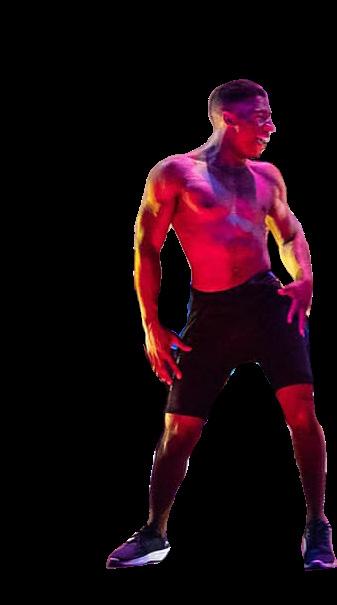
10 minute read
Concerts in Eyes of the Light Guy
An Inside Look Into Live Productions
e production process behind concerts and plays
Advertisement
BY MYA RIGA
Hayley Williams of Paramore at ACL 2022. Live productions are great events that bring a lot of people together to see one theatrical act or concert. Something that can often be overlooked in live productions is what goes on behind the scenes. There are many roles such as stage coaches, managers, directors, actors, artists… the list goes on and on. All of these people work together to put on a production for the audience members, implementing aspects such as sound design, light design, etc.
A vital design aspect is scenic design. For theatrical productions such as plays, musicals, or operas, scenic design is key for portraying the story’s emotions, themes, and general information. For example, the location or time period that the story takes place in.
at
Josafath Reynoso, a scenic designer and lecturer the University of Texas in Austin, walked through his process of designing for a production and where he gets his inspiration from. “At the very beginning, you start conversations with the director and you start doing a bunch of research. Visual research; you research images. I like to do a lot of research that is based on either music or movies,” Reynoso said. The whole process from getting invited to work on a show to opening night is one that is long and full of meetings, working with other people, researching, and improving the design as time goes on. “I want to say every scenic design process is probably between 4-6 months,” Reynoso said. When kickstarting the process, Reynoso said, “I read the play, I talk to the director, and I say, ‘This is what I envision. This is what I’m thinking. This is what’s in my mind when I read this play, when I’m thinking of this play, when I’m thinking of this thing. What do you think?’ We start a conversation, and like I said, I usually show them images or music videos or just a piece of music.”
The inspiration behind his designs aren’t always conventional. Research includes taking inspiration from multiple forms of media, and taking away the emotion or feeling from that particular piece of work and putting it into the set design. “Say it’s a picture of a window and on the window there’s a landscape refl ected. It doesn’t necessarily mean that you, as a designer, take it and build the window. Sometimes, what you build or what you propose as a design is, maybe, a backdrop that has that landscape or maybe the elements,
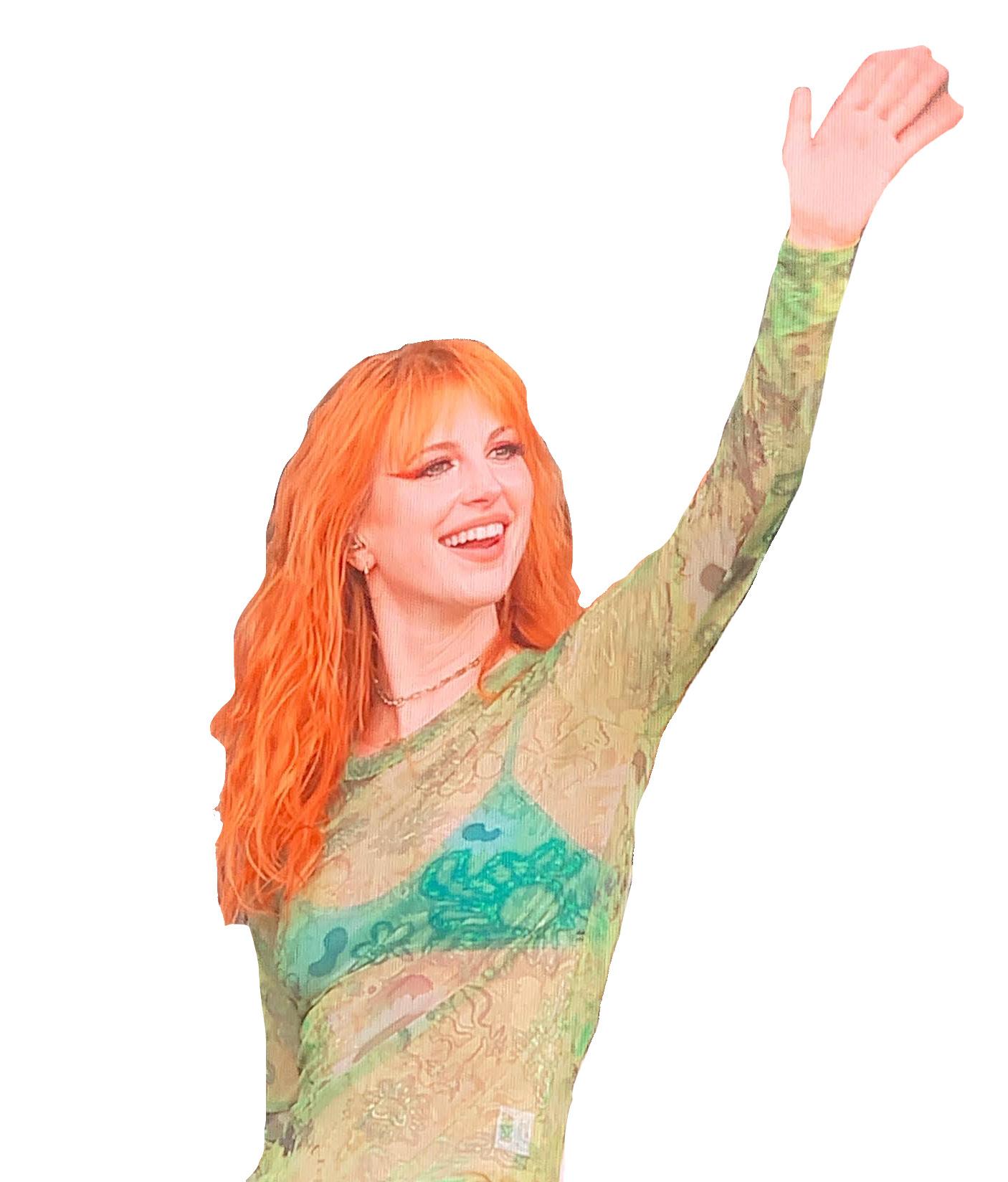

the furniture, the surfaces of the tables are going to be refl ective, so you get the same effect; the same feeling of the picture,” Reynoso said. One example of this is when Reynoso designed a production of the Crucible around 4 or 5 years ago where he took inspiration from a musical piece. “The very fi rst inspiration piece that I shared with my director was a cartoon from the 1930s,” Reynoso said, “In this cartoon, Pluto’s [the main character] having a nightmare, and he goes to Hell. He goes to this weird trial where all the cats he’s ter- rorized have put him on trial and he’s sentenced to whatever. It’s a music piece because all of the cats are singing about how he’s guilty and how they’re going to throw him in jail. That was actually a very effective piece because when I shared it with the director, we both agreed that this idea of this sense of cruel justice, the unfairness, the cruelty of the trial, was part of the crucible, what the show was going to look like. There were a lot of elements that made it into the fi nal design, like the grime, the deteriorated wood, and rough wooden planks. Some of those textures, some of those feelings, some of those effects made it into the fi nal version.” Throughout his career, he has been building this pool of references. “It’s still like a library that you build in your mind. The more things you see, the more music you listen to, the more movies you go watch, the more references that you have and you can say, ‘Oh! This reminds me of that,’ you know, ‘Harry Potter clip where this and this and this and this happens.’”
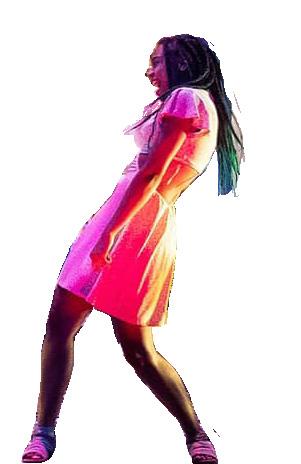
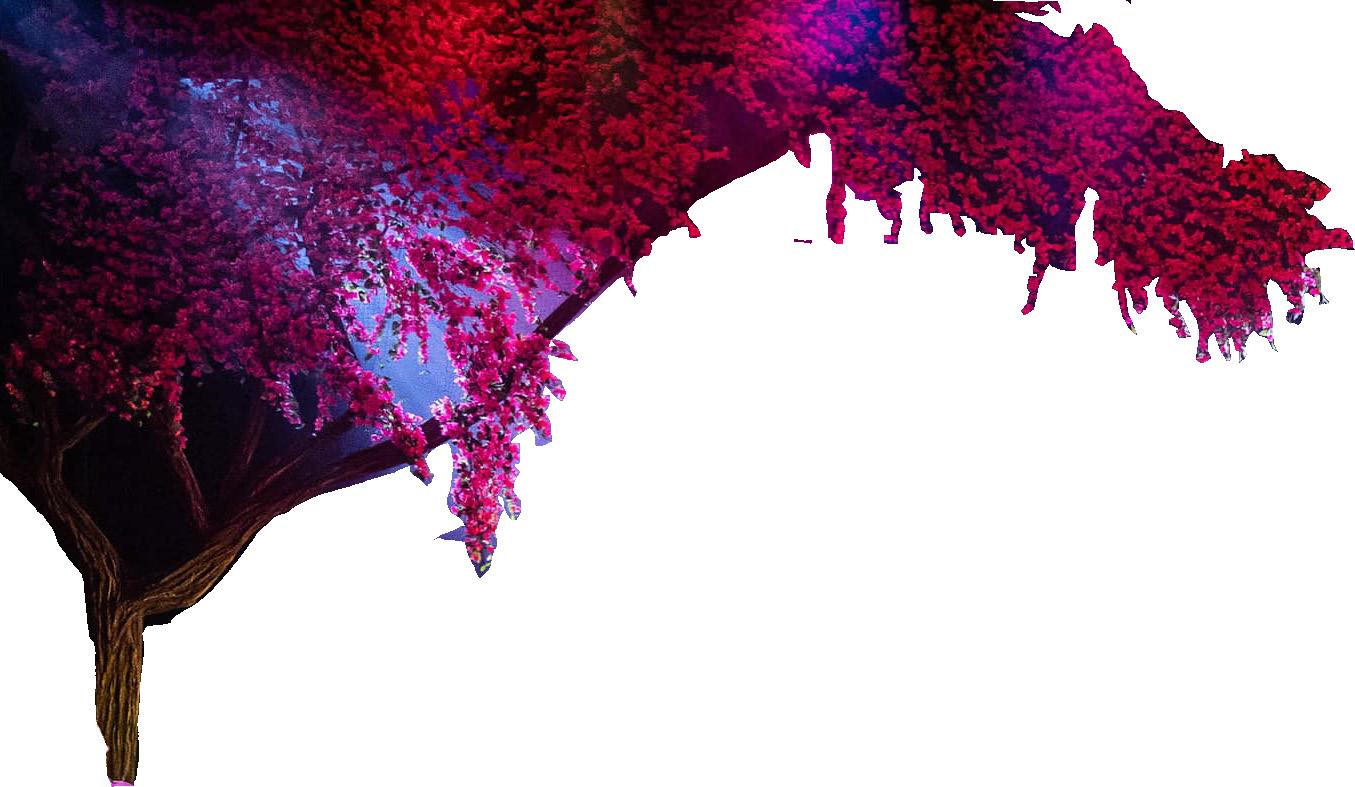
“It’s never the same, and that’s the thing.” Josafath Reynoso
With all of these different inspirations, no production looks the same. There are connections to emotions or feelings that are made with certain colors, objects, or textures, but they vary from each design. “I just recently opened a show for Genia that I had designed four times before. Even though it was the same play, the same text, the characters are the same, the actions are the same, the director is different and their ideas are different. What they want to say with the play is different. There is not one thing that I can tell you, oh, sadness is blue or happiness is a square, it always depends on that particular moment, even in the way that I, myself, am feeling in that particular moment. Sometimes sadness is going to be red and sometimes sadness is going to be yellow and sometimes it’s going to be Billie Eilish, gray, pink, whatever that is.” After multiple meetings with the Director to talk about how the
Actors dancing with a tree and a moon in the backdrop. Photo Courtesy of Josafath Reynoso.
show will look, a design is drafted and sent to the technical director in the theater’s shop to be built. During this time, rehearsals are already happening with the actors in a rehearsal studio since the Director already knows what the set will look like. The actors don’t rehearse on set until it has been fi nished and loaded into the theater. “They are usually going to be rehearsing for about 2-3 weeks at a rehearsal studio, and then they jump into the set, on stage, after it’s been loaded. For that period, which we call ‘designer run’, is a very fi rst run specifi cally for the designer to watch, to see the movement, to see how the set is being used, and to fl ag any potential issues.” Once everything is fi xed and done, the production day comes and everything comes to life. “Honestly, it’s hard to keep a favorite, because I feel like, as a designer your job is to fall in love with the next show you’re doing. You cannot say, ‘That was the best thing that I’ve done.’ There have been shows that have been more successful than others, that have given me more than others, there are some shows that are very small but very fulfi lling.” Reynoso said. “I work a lot in Argentina and in Ireland, and those usually have 5 actors on almost a bare stage with a couple of elements that I still get to design. They are very different productions from, say, Mamma Mia which has spinning platforms and a giant tree on stage, but at the same time, each one has its own thing.”
On the other side of the same giant coin, there is lighting design. Concerts are spots where this form of design shines as you are surrounded by urries of color for a few hours. Rob Sinclair, a lighting designer who has designed for bands such as Queen, System of a Down, Tame Impala, Vampire Weekend, and other various bands, says, “I greatly enjoy what I do. I get to work with a glorious group of people, I get to work with talented artists, other talented designers, and talented technicians.” Sinclair started working in this eld in his late teens/early twenties. “ ings were a lot less formal when I le school in the late 80s and there was a lot less of an expectation to go to college if you were doing this sort of work,” Sinclair said, “I le school when I was about 18 and I worked as a DJ, and then I did a course called theater electrics. So it was basically a house electrician course with some theatrical components added to it. We learned how to wire houses and how to wire switches and all of the things that all of the regular electricians did and then had extra components on top of that. at’s the only formal training that I had.”
Erich Bertti, a lighting designer who has worked with Ghost for many years, started at a similar age. Bertti said, “My uncle is the founder of one of the biggest South American lighting companies called LPL and I grew up around it helping out on gigs, running followspots and learning the technical aspects. e majority of the men in my family work around lighting. At the age of 18 I moved to São Paulo and started working to make a living and studying for college exams. A Couple of years later everything seemed so natural that I ended up ‘locking’ my college course to take on my rst international tour.” With starting a large project comes a design phase or process, and both Sinclair and Bertti said that it starts with getting to know the project, designing, and implementing. “Every
gig has its own speci cs and you have to evolve and adapt every single time,” Bertti said, “I’d say there’s the study of your client rst, the understanding of its past work, what it wants/expects of the future and to really absorb the objective of the design. A er analyzing these factors it’s all about what you consider as good references in the world of art and to translate that
Queen + Adam Lambert performing in 2021. Photo courtesy of Rob SinclairSinclair
“The very short answer is chaos.” Rob Sinclair
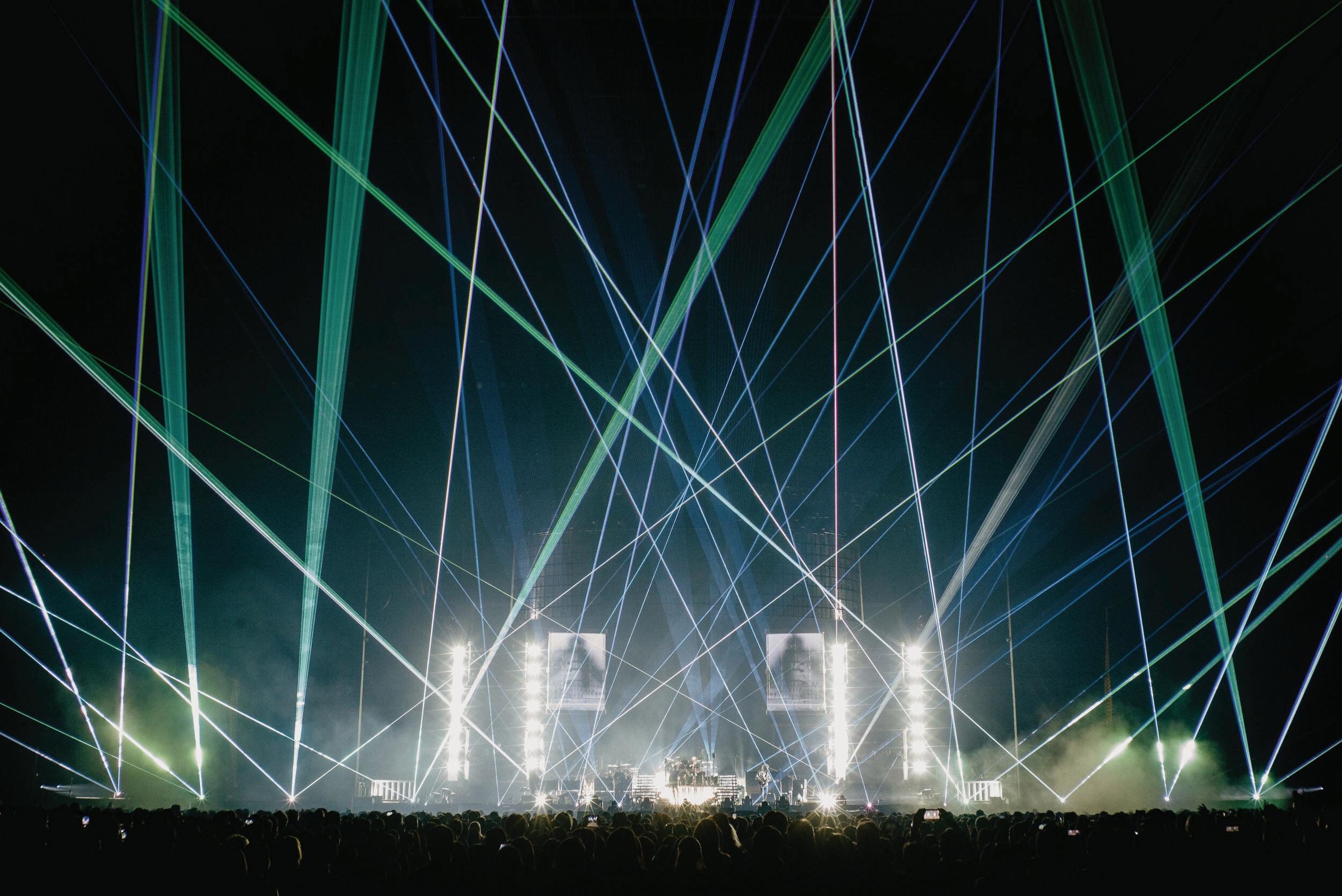
Ghost performing at the Moody Center in Austin, Texas 2022. inclair into a lighting design. I personally like architecture, sculpting and painting a lot so I always have a very caring eye for the structural plot and in the choosing of my xtures.” Sinclair explained how his process happens in 3 similar phases. e discovery phase, “when you try and nd out what everyone wants, what their references are, what their budgets are, and what their logistical restraints are.” Second, the design phase, “where you take that rst information and try to turn it into some ideas.” Lastly, there is an implementation phase, where “you’re in rehearsals or you’re actually physically putting something together, and you’re in a room and things become more manifest.” At the end of this implementation phase is putting on the show. e days start early and end late; Sinclair and Bertti both work all day to make sure everything is being built properly and making any necessary changes for a show at night. “Generally, the team will start work at around 6 or 7 am, the trucks will unload, things will start to be built, you know, it depends on the size of the show and the scale of which it’s working. It’s usually an early start with an ideal of having everything built just a er lunch so that the artist can do a rehearsal in the a ernoon, and that’s the point I would make any changes or we would implement any notes, although on a regular day on a tour there’s very little time to do that sort of thing,” Sinclair said. Bertti said, “Long hours of focusing every single xture and checking notes from the last night until doors are open and audience is in. en it is having a great show, dismantling and loading out everything to repeat the next day.”
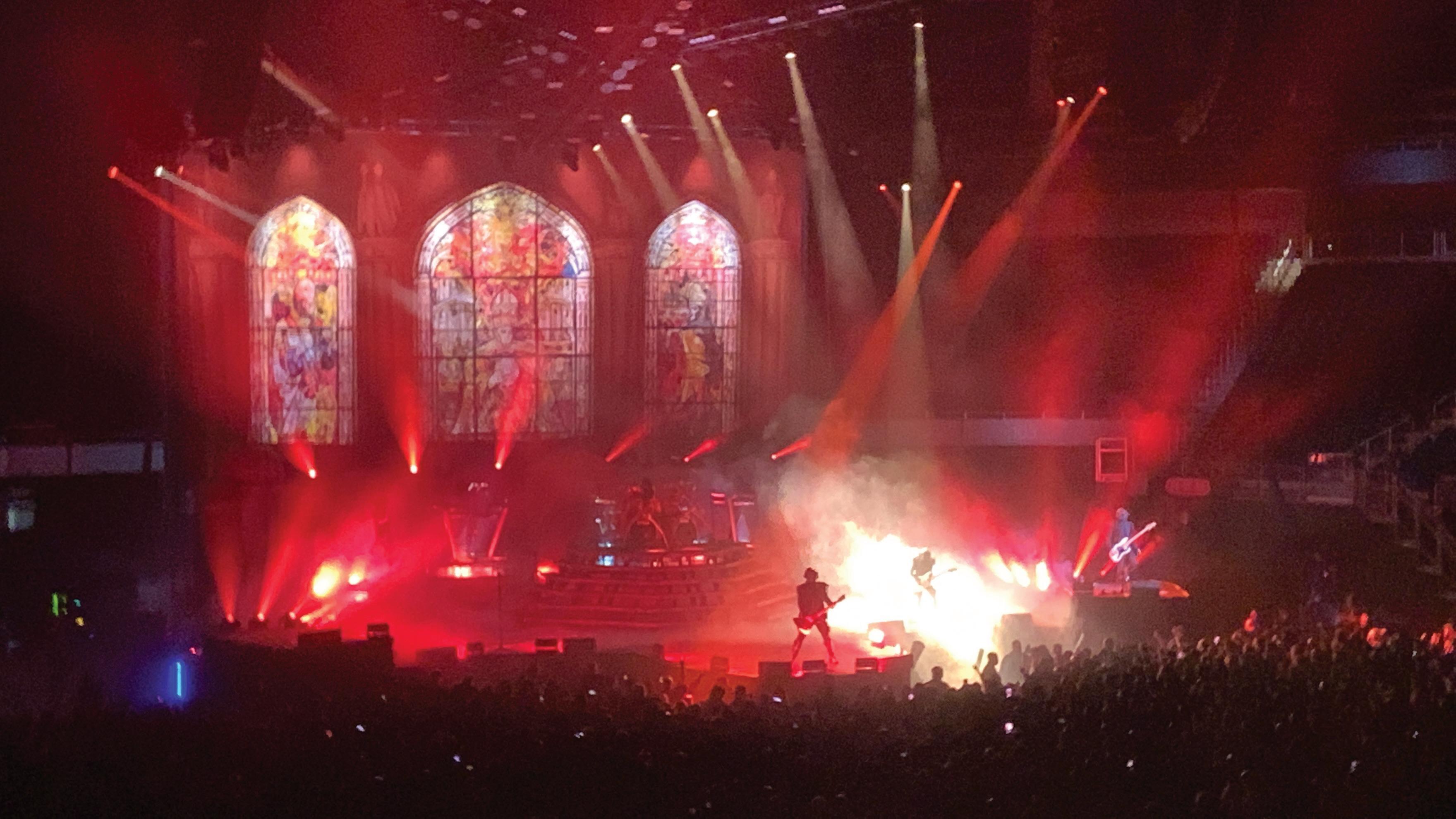
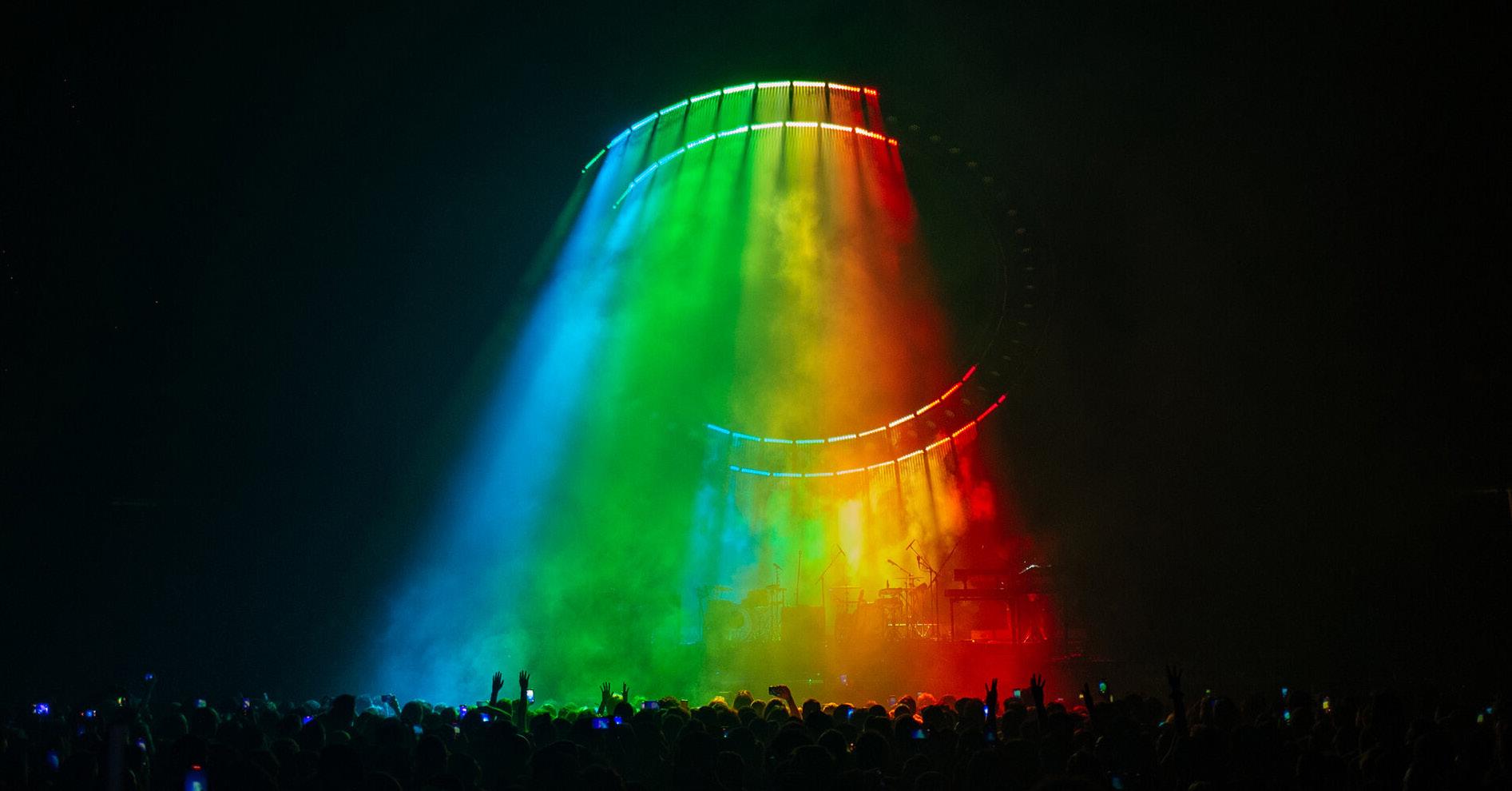
“Ghost has a special place since it’s been the one that got me out of the Brazilian market into worldwide contacts.” Erich Bertti
Tame Impala performing in 2021. Photo courtexy of Rob Sinclair.nclair





